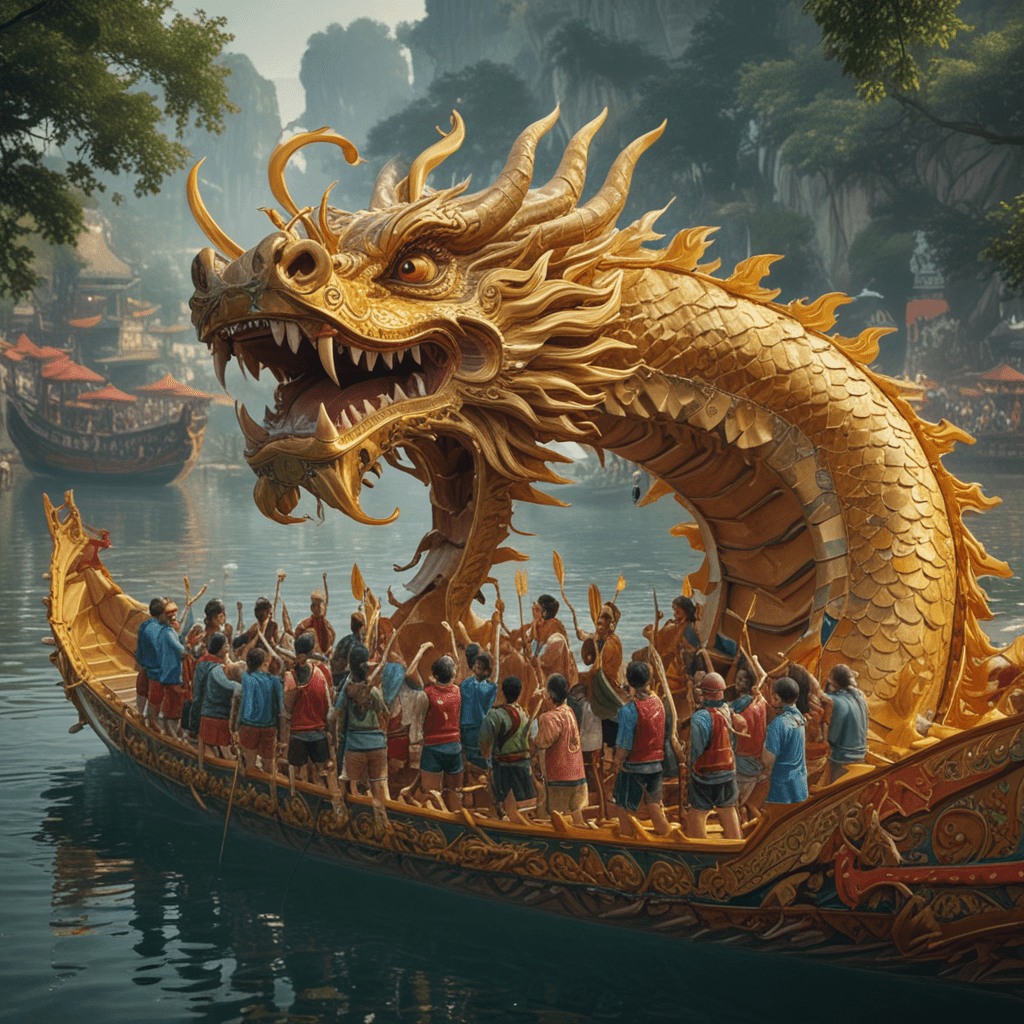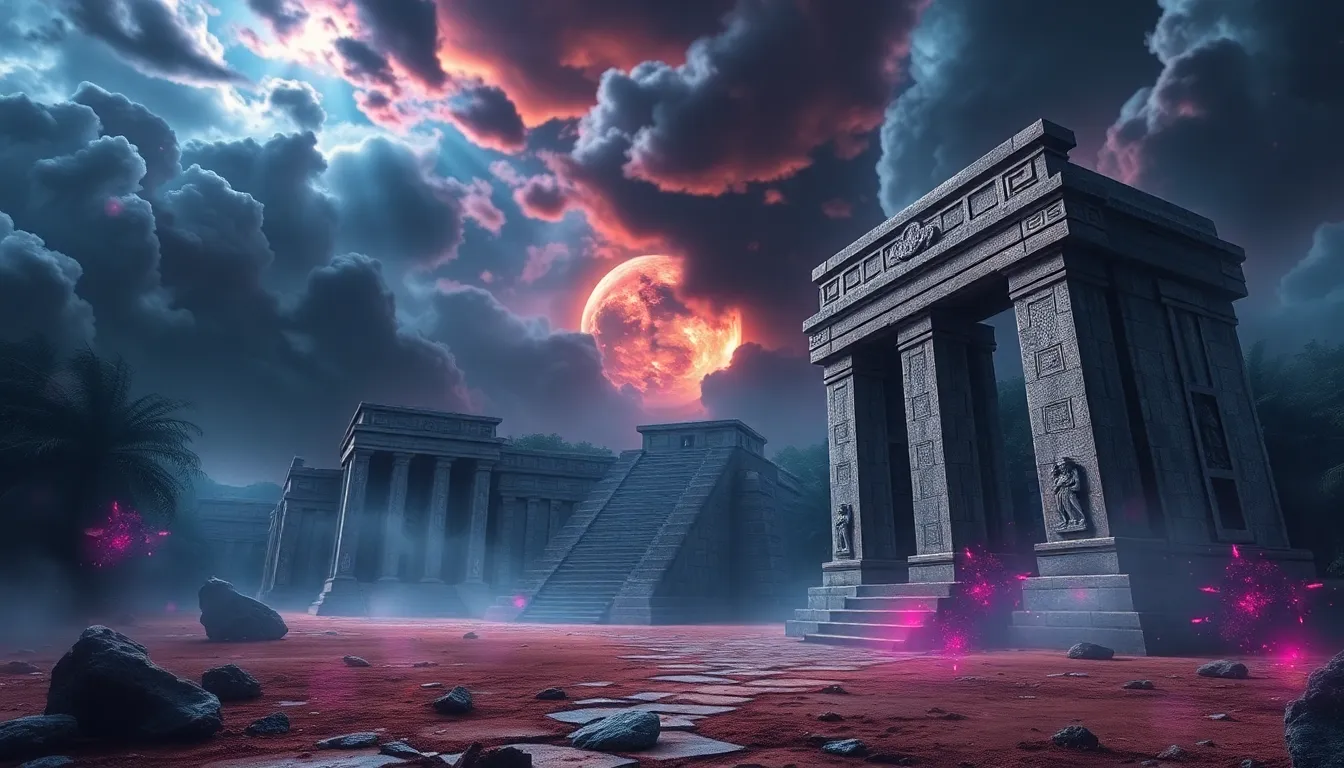The Legend of the Monkey King’s Journey to the West in Chinese Mythology
I. Introduction
In the realm of Chinese mythology, the epic tale of the Monkey King's Journey to the West stands as an enduring testament to the power of perseverance, humor, and the triumph of good over evil. This beloved legend, originating from the 16th-century novel "Journey to the West" by Wu Cheng'en, has captivated generations with its vibrant characters, extraordinary adventures, and profound spiritual insights.
II. The Birth and Rise of the Monkey King
The Monkey King, also known as Sun Wukong, was born from a magical stone that absorbed the essence of heaven and earth. Possessing immense strength and supernatural powers, he wreaked havoc in the Heavenly Court, challenging the gods and causing chaos. However, his defiance led to his banishment beneath a mountain for 500 years.
III. The Peach Banquet and the Heavenly Court
When the Queen Mother of the West held a grand Peach Banquet, Sun Wukong was inadvertently omitted from the guest list. Enraged, he stormed the Heavenly Palace, disrupting the festivities and humiliating the Jade Emperor. His actions brought him into direct conflict with the celestial authorities and set him on the path to his epic journey.
IV. The Journey to the West
To atone for his past transgressions, Sun Wukong was tasked with accompanying the devout Buddhist monk, Tang Sanzang, on a perilous pilgrimage to India to retrieve sacred Buddhist scriptures. Accompanied by two loyal disciples, the gluttonous Pigsy and the steadfast Sandy Monk, they faced countless challenges and temptations along the way.
V. The Challenges and Trials of the Journey
The Journey to the West was fraught with obstacles and treacherous spirits who sought to devour the travelers. Sun Wukong's quick wit, magical powers, and unyielding determination proved invaluable in overcoming these challenges. He battled demons, outmaneuvered cunning妖怪s (demons), and overcame numerous trials that tested his resolve and devotion.
VI. The Enlistment of Tang Sanzang
Tang Sanzang, the central figure of the Journey to the West, was a devout Buddhist monk who embarked on a pilgrimage to India to retrieve sacred scriptures that would aid in the spread of Buddhism in China. Despite his pious nature, Tang Sanzang was a gentle and compassionate figure, often swaying the minds of treacherous spirits with his kindness and diplomacy. His unwavering faith and determination served as a guiding light for his companions throughout their arduous journey.
VII. The Adventure with the Pigsy
Zhu Bajie, known as the Pigsy, was a former celestial general who was banished to the mortal realm and cursed to reincarnate as a pig. Despite his gluttonous and lustful nature, Pigsy possessed a loyal heart and formidable fighting skills. His comedic antics and unwavering devotion to Master Sanzang added a touch of levity and camaraderie to the perilous journey.
VIII. The Recruitment of the Sandy Monk and the Horse Dragon
Sha Wujing, known as the Sandy Monk, was a former River God who was punished for his negligence. He possessed an unassuming nature but was known for his calm demeanor, strong physique, and unwavering loyalty. The Horse Dragon, a mythical creature with the body of a horse and the head of a dragon, served as the group's mode of transportation. His swiftness and endurance proved invaluable in traversing the treacherous landscapes they encountered.
IX. The Final Battle at Mount Buddha
As the travelers approached their destination, they faced their greatest challenge – a confrontation with a powerful demon king at Mount Buddha. Led by Sun Wukong, the group engaged in a fierce battle against the demon and his minions. Through their combined strength, wit, and unwavering determination, they emerged victorious, overcoming the final obstacle in their pursuit of enlightenment.
X. The Triumph and Enlightenment of the Monkey King
Upon reaching India, Tang Sanzang successfully retrieved the sacred scriptures and returned to China to spread the teachings of Buddhism. Sun Wukong, having proven his loyalty and devotion, was finally granted Buddhahood by the Buddha himself. He assumed the title of Victorious Fighting Buddha, a testament to his unwavering spirit and the triumph of good over evil. The Monkey King's legend continues to be celebrated in Chinese culture, inspiring generations with its themes of perseverance, compassion, and the indomitable nature of the human spirit.
FAQ
Q: What is the significance of the Journey to the West in Chinese mythology?
A: The Journey to the West is one of the most beloved and enduring legends in Chinese mythology, encapsulating themes of perseverance, compassion, and the triumph of good over evil.
Q: Who were the main characters in the Journey to the West?
A: The main characters in the Journey to the West were Sun Wukong (the Monkey King), Tang Sanzang (the devout Buddhist monk), Zhu Bajie (the Pigsy), Sha Wujing (the Sandy Monk), and the Horse Dragon.
Q: What were some of the challenges faced by the travelers on their journey?
A: The travelers faced numerous challenges on their journey, including battling demons, overcoming treacherous landscapes, and resisting temptations.
Q: What was the ultimate goal of the Journey to the West?
A: The ultimate goal of the Journey to the West was to retrieve sacred Buddhist scriptures from India, which Tang Sanzang sought to spread throughout China.
Q: What is the legacy of the Journey to the West?
A: The Journey to the West continues to be celebrated in Chinese culture, inspiring generations with its themes of perseverance, compassion, and the indomitable nature of the human spirit.



